 |
|
HOME
|
US Navy -
ships
|
US Navy - air
units
|
USMC - air
units
|
International
Navies
|
Weapon Systems
|
Special Reports |
|
Royal Canadian Navy - Marine Royale
Canadienne Harry DeWolf class Arctic and Offshore Patrol Vessel |
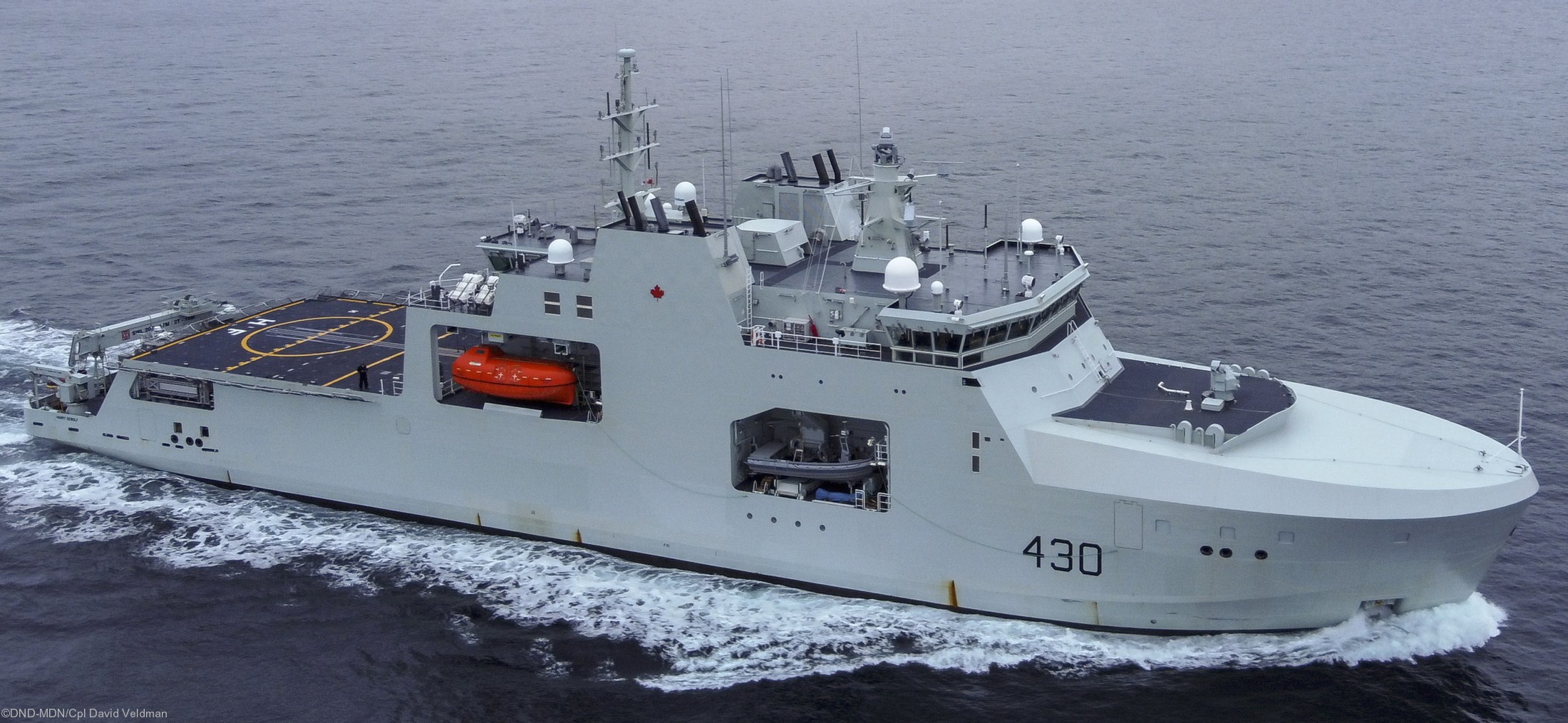 |
| 09/25 |
| Ships: |
|
AOPV 430
HMCS Harry DeWolf (2021) AOPV 431 HMCS Margaret Brooke (2022) AOPV 432 HMCS Max Bernays (2024) AOPV 433 HMCS William Hall (2024) AOPV 434 HMCS Frédérick Rolette (2025) AOPV 435 HMCS Robert Hampton Gray (?) |
| Specifications: |
|
Displacement: 6,615 tons (6511 long tons) Length: 103.6 meters (339 ft 11 in) Beam: 19 m (62 ft 4 in) Draft: 5.7 m (18 ft 8 in) Speed: 17 knots (31 km/h) - open water / 3 knots (5.6 km/h) - icebreaking Range: 6,800 NMI (12,600 km) at 14 knots (26 km/h) Complement: 65 (accommodation for 87) Propulsion: DIESEL-ELECTRIC General Electric Integrated Full Electric Propulsion (IFEP) 4 x MAN Diesel Generators (4,800 shp / 3.6 MW), each 2 x GE Electric Motors (4.5 MW / 6,000 hp, each) 2 shafts / 2 propellers / 1 bow-thruster Armament: 1 x BAE Systems Mk.38 Mod.2 (modified) 25mm Machine Gun System (MGS) Aviation: landing pad & hangar for 1 helicopter or UAV Systems: Lockheed Martin Canada CMS 330 Combat Management System Terma SCANTER 6002 radar system SATCOM (Link 16) Multichannel VHF/HF Radio Anti-missile detect systems SAGEM BlueNaute navigational system OSI Maritime Systems, Integrated Bridge Navigational System Kelvin Hughes SharpEye X and S-band navigation radars SAGEM Damage/Machinery Control Systems |
|
The Harry DeWolf-class offshore patrol
vessels are warships of the Royal Canadian Navy (RCN) built by the
Government of Canada Arctic and Offshore Patrol Ship (AOPS)
procurement project, part of the National Shipbuilding Procurement
Strategy (now called National Shipbuilding Strategy). In July 2007
the federal government announced plans for acquiring six to eight
icebreaking warships for the RCN. The vessels are modelled on the Norwegian NoCGV Svalbard and as of 2007 were projected to cost CA$3.5 billion to construct with a total project procurement budgeted to cost $4.3 billion in order to cover maintenance over the 25-year lifespan of the vessels. In 2018 it was reported that the cost of the first six ships had increased by $810 million over previous projections. The lead ship of the class was announced as Harry DeWolf in September 2014, and four additional ships were named in January 2015. Construction of the ships Harry DeWolf and Margaret Brooke started in September 2015 and September 2016 at Halifax Shipyards, respectively. Harry DeWolf and Margaret Brooke were originally planned to be delivered in 2019 and 2020 respectively. Harry DeWolf was officially launched on 15 September 2018. Margaret Brooke was launched on 10 November 2019. Max Bernays began construction in December 2017 and William Hall was also planned to begin in 2017, although construction was delayed to early 2019. Max Bernays was launched in October 2021, and was expected to be followed by William Hall in 2022. Frédérick Rolette was scheduled to begin construction in 2019, with construction on Robert Hampton Gray expected to begin in 2021. They were originally planned to be completed by 2022 and 2023, respectively. However, in 2020 it was confirmed that ships five and six (Frédérick Rolette and Robert Hampton Gray) would not begin construction until 2021 and 2022 respectively. On 22 May 2019, an official announcement was made to begin the process of building two vessels for the Canadian Coast Guard, bringing the total number of ships in the class to eight. Construction: On 18 June 2015 it was reported that the construction of test modules for the lead ship of the class Harry DeWolf was underway. The first sections of keel were placed on 11 March 2016, but the official laying of the keel of Harry DeWolf was held on 9 June 2016, marking the first naval construction in Canada since 1998, and the largest purposefully-built warship for the RCN in over 50 years. In September 2016, it was announced that construction had begun on Margaret Brooke and that 50 of 64 modular pieces of Harry DeWolf had been completed. On 8 December 2017, the three main sections of Harry DeWolf were fitted into place. The first steel for Max Bernays was cut on 19 December 2017. Construction of William Hall started on 3 May 2019. Margaret Brooke was launched on 10 November 2019. First steel was cut for the fifth ship, Frédérick Rolette, in May 2021. During the COVID-19 pandemic, Irving Shipbuilding announced that construction would be halted for at least three weeks beginning in March 2020. Harry DeWolf was delivered to the Navy in July 2020, with commissioning now anticipated in mid-2021 following post-acceptance sea trials. The revised start dates for the start of construction of the fifth and sixth vessels of the class were projected as 2021 and 2022, respectively. The two Coast Guard AOPS variants (ships seven and eight) were expected to begin construction in 2022 and 2023. Criticism: The Harry DeWolf class has been criticized for its design and effectiveness as critics believe that the class is ineffective in its designated role of arctic and offshore patrol. Some criticism focuses on the fact that the ships are slow and underarmed compared to the Russian Project 23550 patrol ship which are of similar design and tonnage, but are to be equipped with 3M-54 Kalibr anti-ship missiles. However, others believe that the ships' capabilities are sufficient given their largely constabulary mission, and are in line with existing naval and coast guard vessels of other Arctic nations. In April 2013, the Rideau Institute and the Canadian Centre for Policy Alternatives released a report on the proposed AOPS. The report was written by UBC Professor Michael Byers and Stewart Webb. The report's conclusion was that Canada would be better suited to have purpose built ships, namely icebreakers for the Arctic and offshore patrol vessels for the Pacific and Atlantic coasts. In May, the CBC revealed that the projected cost of the design phase of the project was many times what other countries paid for similar ships based on the same Norwegian class for design, construction, and full-up operational deployment of multiple ships. Design is usually projected to consume 10-20% of the project cost. The projected design cost of the ship class is $288 million, versus an expert cost estimate that they should only cost $10-15 million to design, in addition to $5 million Canada paid to Norway for the design of Svalbard. The Norwegians spent less than $100 million for the initial design and construction of the vessel in 2002. Denmark built two ships for $105 million in 2007, and Ireland did the same for $125 million. Design: The vessels' design was initially intended to incorporate a conventional icebreaking bow for cruising, and would have proceeded backwards for breaking heavy ice. The vessels' stern would have been designed for ice breaking and they would have employed azimuth thrusters for propulsion and for chewing through resistant ice. However, due to cost constraints, a conventional bow-first design was chosen for both light and heavy icebreaking. The propulsion would be provided by diesel-electric twin shafts with bolt-on propellers, similar to existing Canadian Coast Guard icebreakers. The vessels' ice class is Polar Class 5, but the bow region is further strengthened to higher Polar Class 4 level. The vessels will have a hangar and flight deck capable of employing and maintaining the same maritime helicopters as the RCN's other vessels: the CH-148 Cyclone and the CH-149 Cormorant. In 2008, a contract was awarded to BMT Fleet Technology and STX Canada Marine to assist in developing technical specifications and a design for the project. The technical specifications were to be used to draft a request for proposals. The government later awarded a design contract to BMT Fleet Technology and STX Canada Marine to develop the design of the vessel for issue to the selected NSPS proponent. The ships are built in three large mega blocks: centre, aft and bow. Each mega block consists of 62 smaller building blocks. The first steel was cut on Harry DeWolf in September 2015. The ships are designed to displace 6,440 metric tons (6,340 long tons), making it the largest class of naval vessels produced in Canada in the past 50 years with the previous being the retired Protecteur-class replenishment oiler. They are capable of outfitting multiple payload options such as shipping containers, underwater survey equipment, or a landing craft. The vessels have a 20-tonne (20-long-ton) crane to self-load/unload, and a vehicle bay to carry vehicles for deployment over the ice. The design also calls for an enclosed cable deck and forecastle to better cope with the Arctic environment. On the open sea, the ship has fin stabilizers to reduce roll that are retractable during ice operations. Propulsion and power: The vessels have a diesel-electric powertrain with four 3.6-megawatt (4,800 hp) diesel generators producing electricity for two 4.5-megawatt (6,000 hp) propulsion motors. Armament: In August 2015, it was announced that BAE Systems had won the contract to provide up to six modified Mk.38 Mod.2 25mm cannon for the naval ships in the class (coast guard order will be unarmed as CCG lacks enforcement mandate). This contract also covers the service life of the weapons. Integrated Bridge and Navigation System: In 2014 OSI Maritime Systems Ltd. was selected by Lockheed Martin Canada to design the Integrated Bridge and Navigation System for the AOPS program, this was followed by a contract for the Implementation Phase in 2015. Since, OSI has built and installed all AOPS Integrated Bridge and Navigation ship sets. Sensors: In September 2015, it was announced that the ships would be outfitted with SAGEM BlueNaute navigational systems. On 7 October 2015, Thales IFF system was selected for use on the class. Terma currently provides its SCANTER 6002 radar system to Lockheed Martin Canada as part of the Combat Management System (CMS 330), which was selected by Irving Shipbuilding Inc. for the Arctic and Offshore Patrol Ships (AOPS). Canadian Coast Guard version: The Canadian Coast Guard version will be built to a slightly modified design. Modifications include a new bridge layout and accommodations for a non-military crew subject to Transport Canada requirements. Some areas are to be changed to meet the needs of coast guard equipment and there will be modifications to the deck. source: wikipedia |
|
class + detail images for more images go to the individual ship's page |
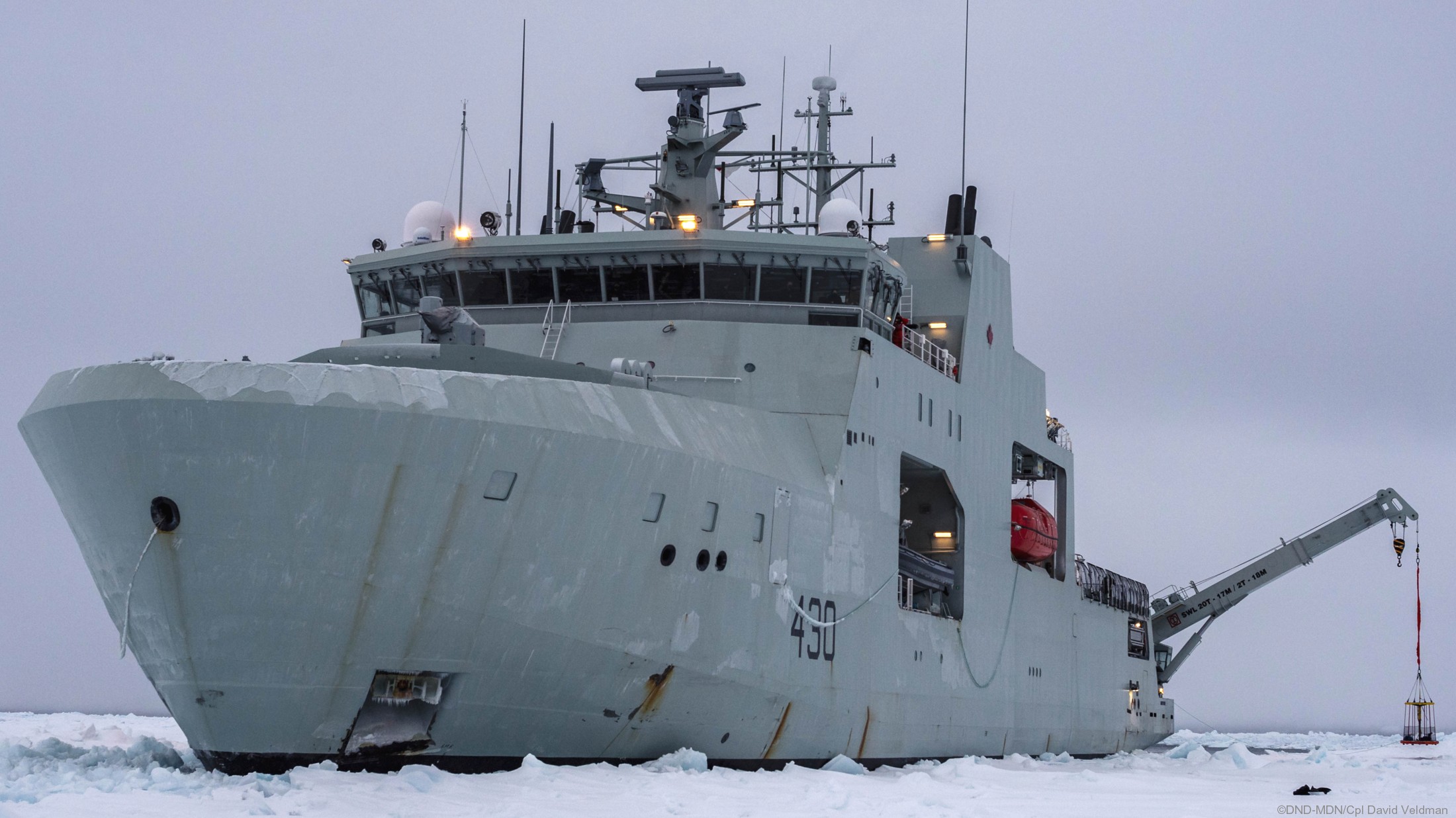 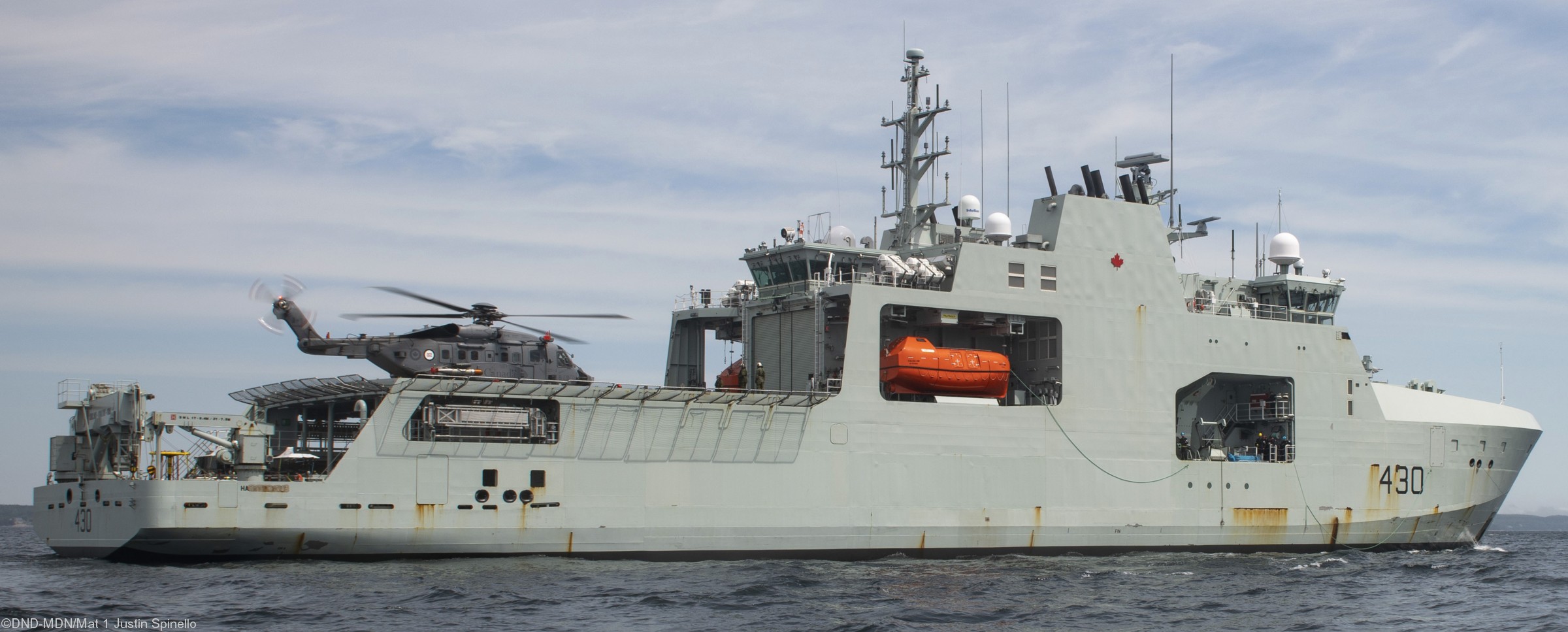 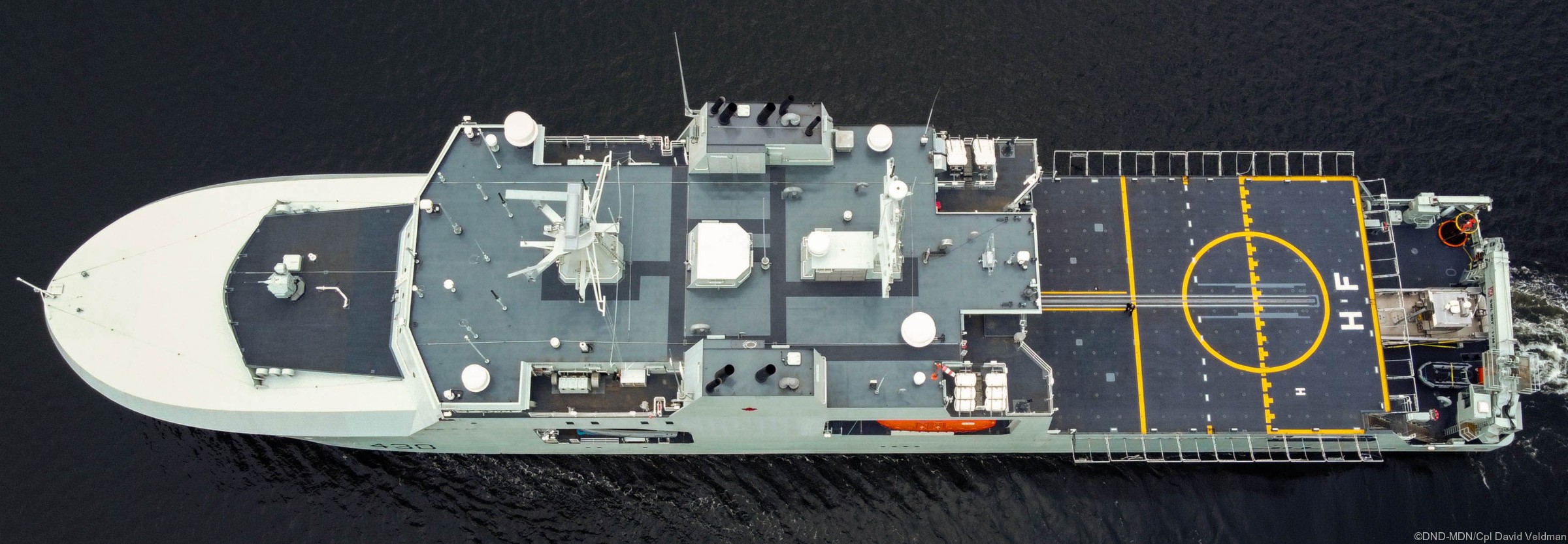 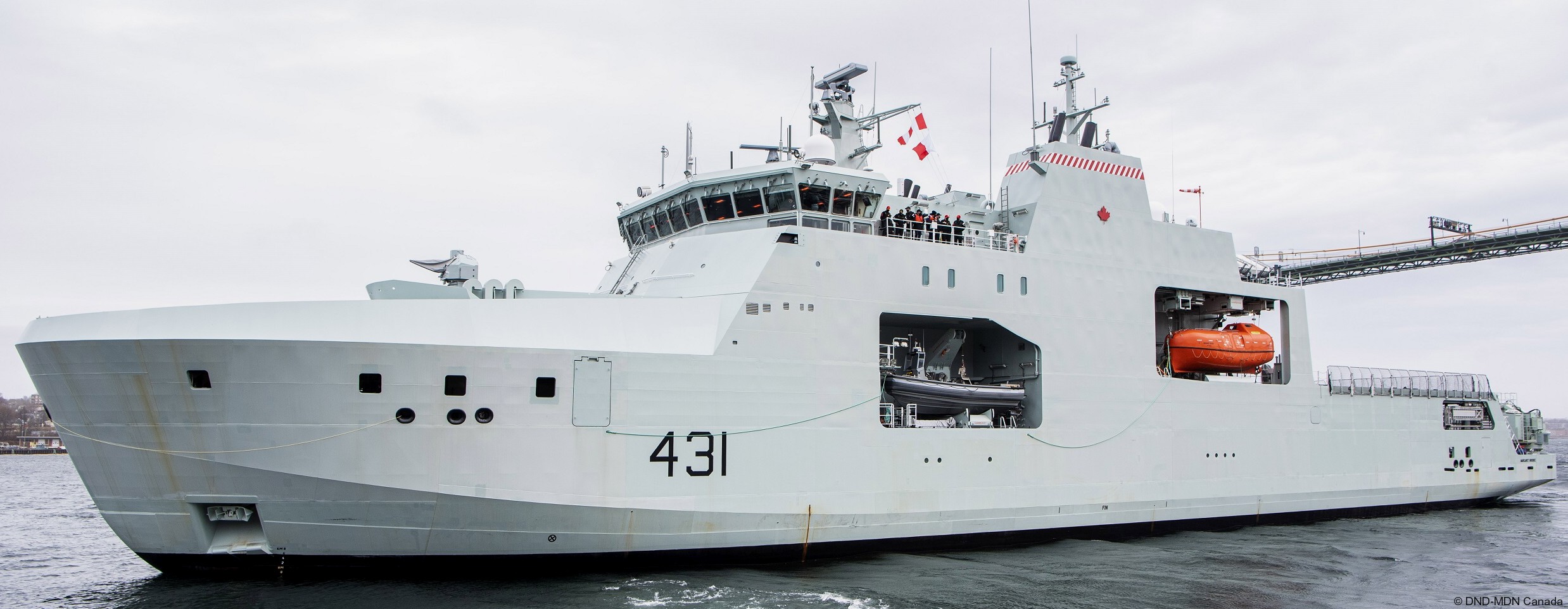 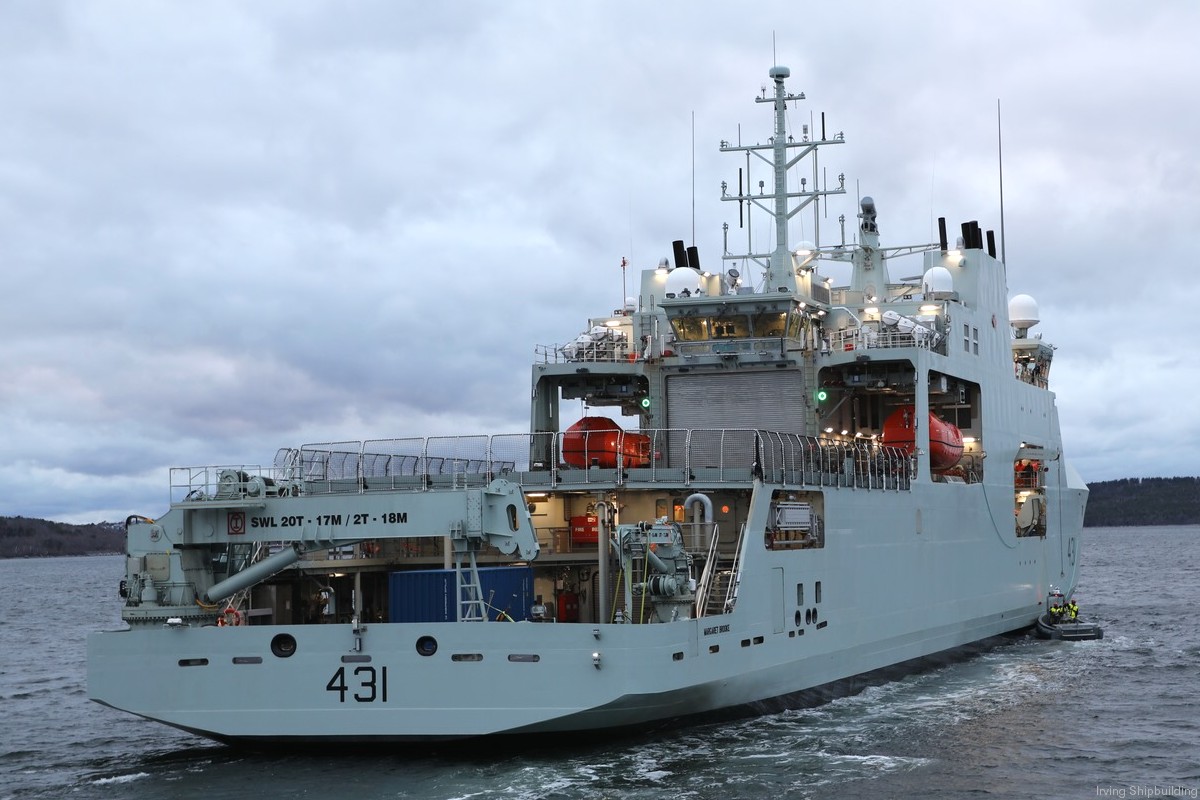 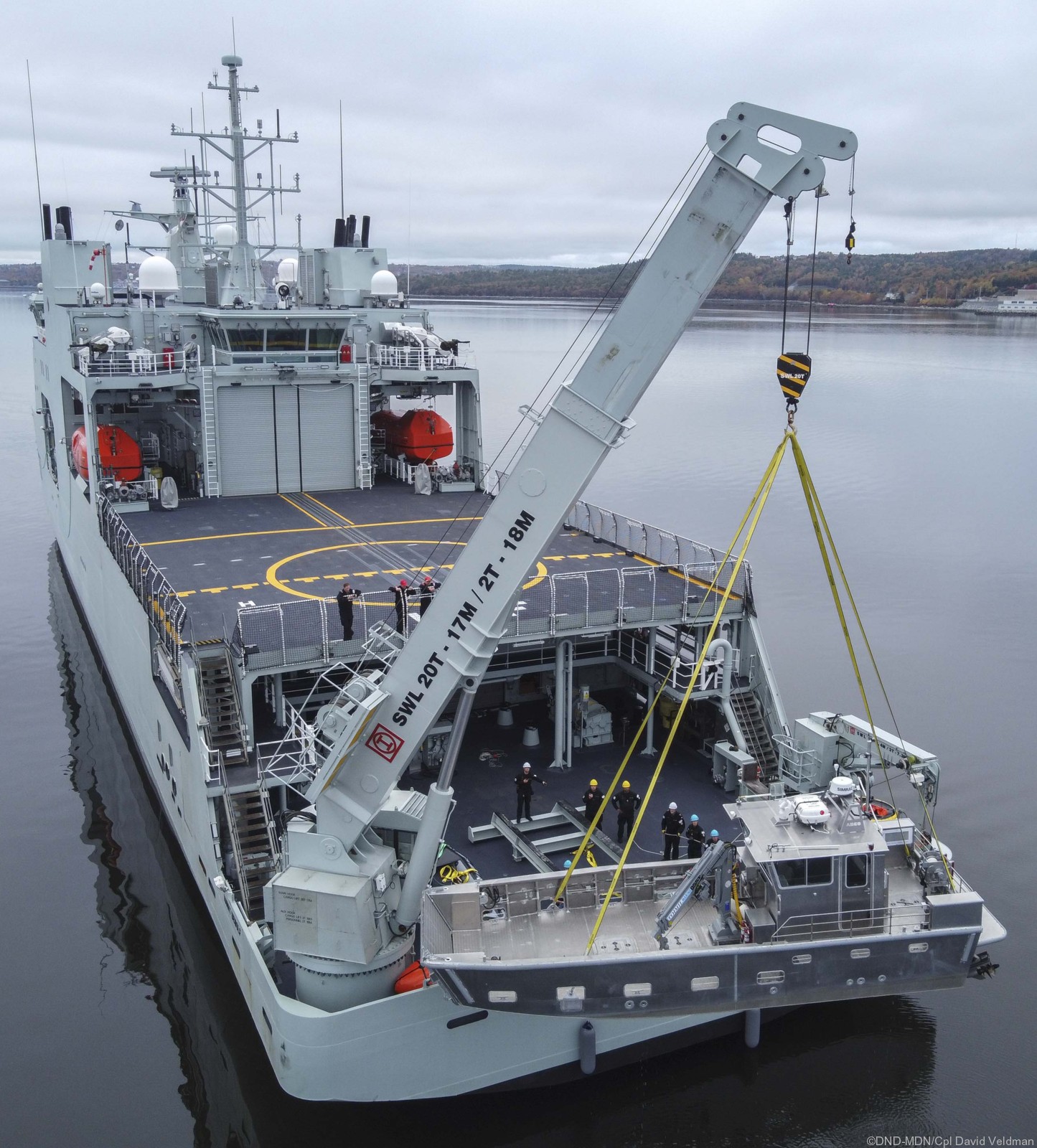 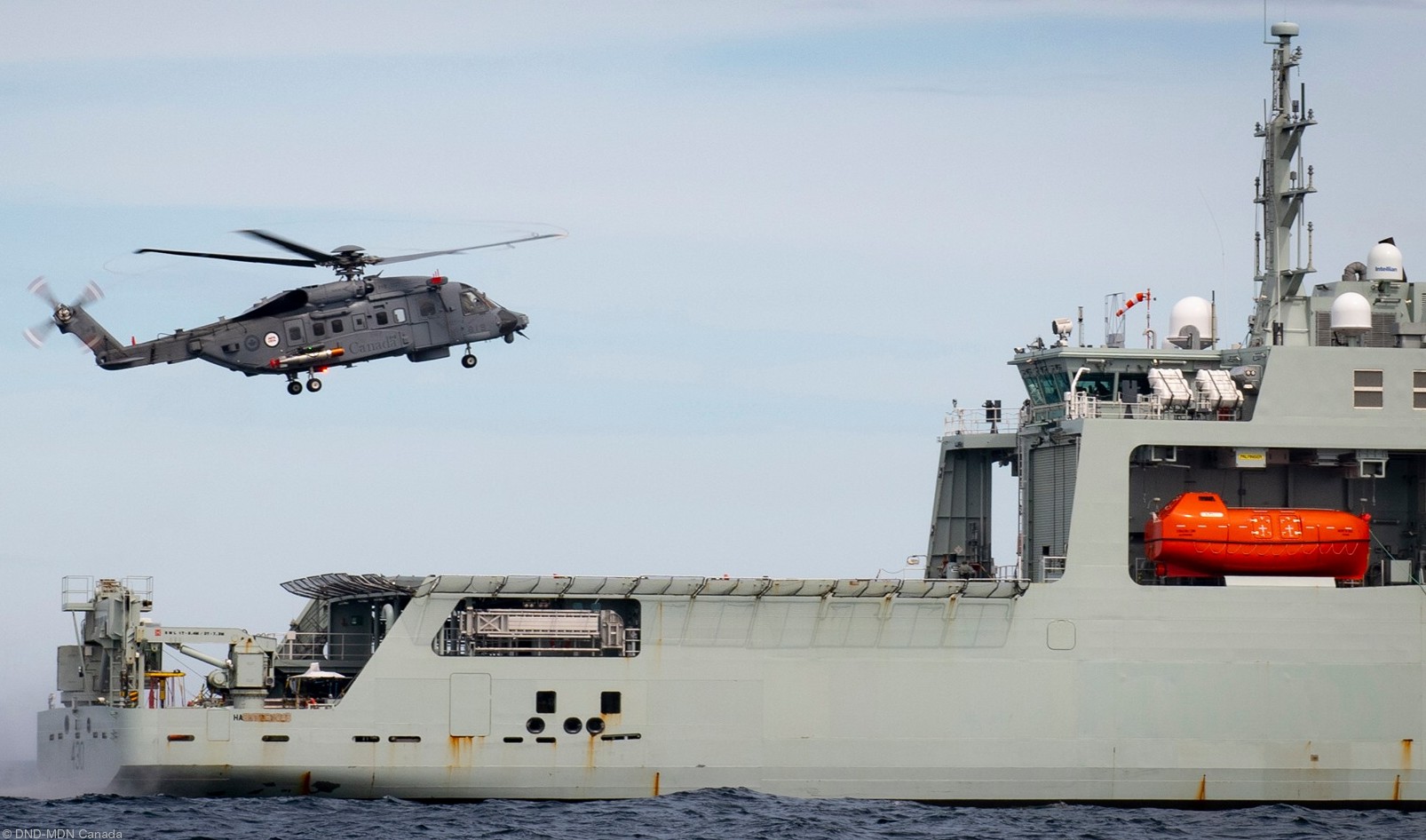 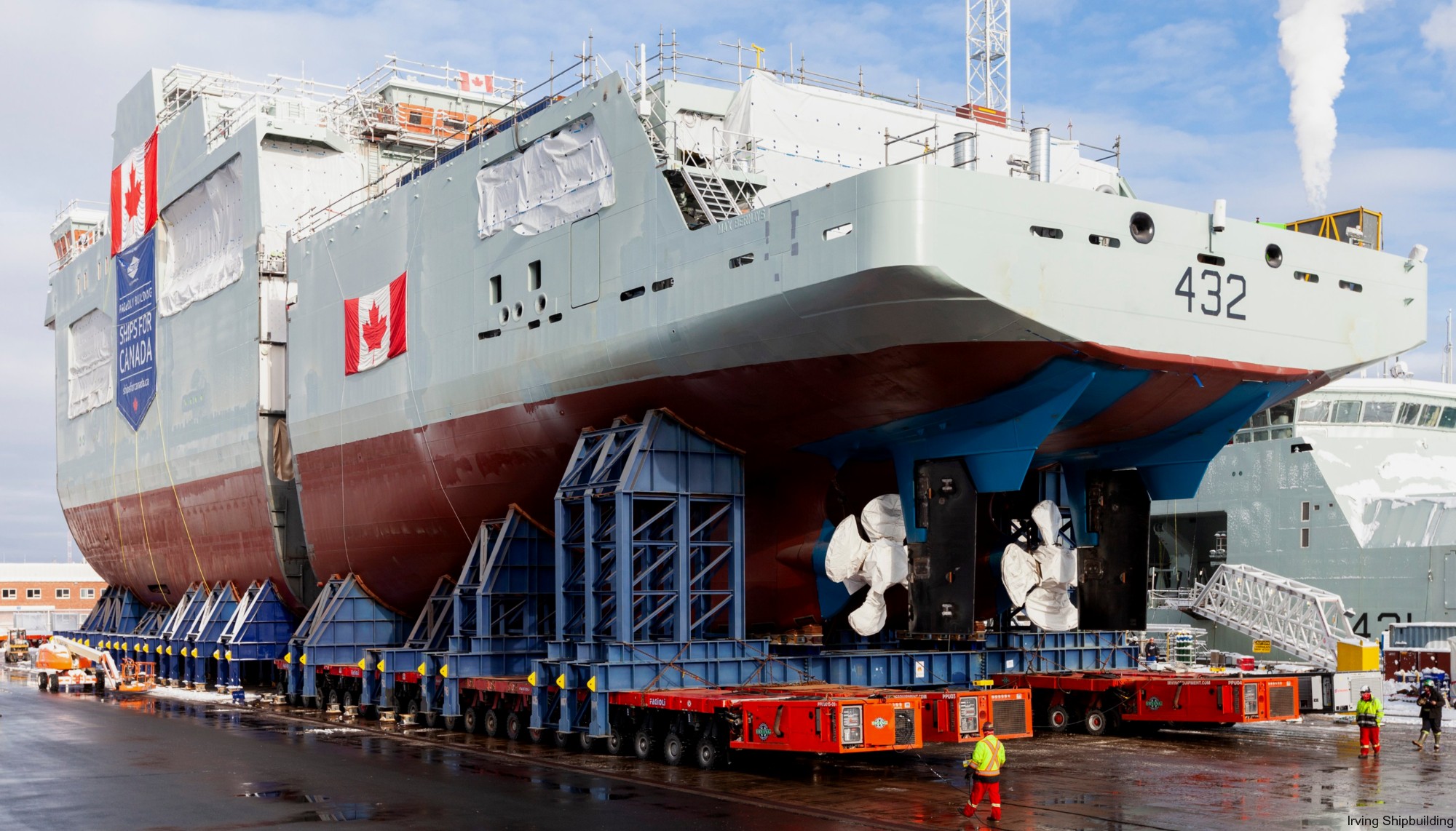 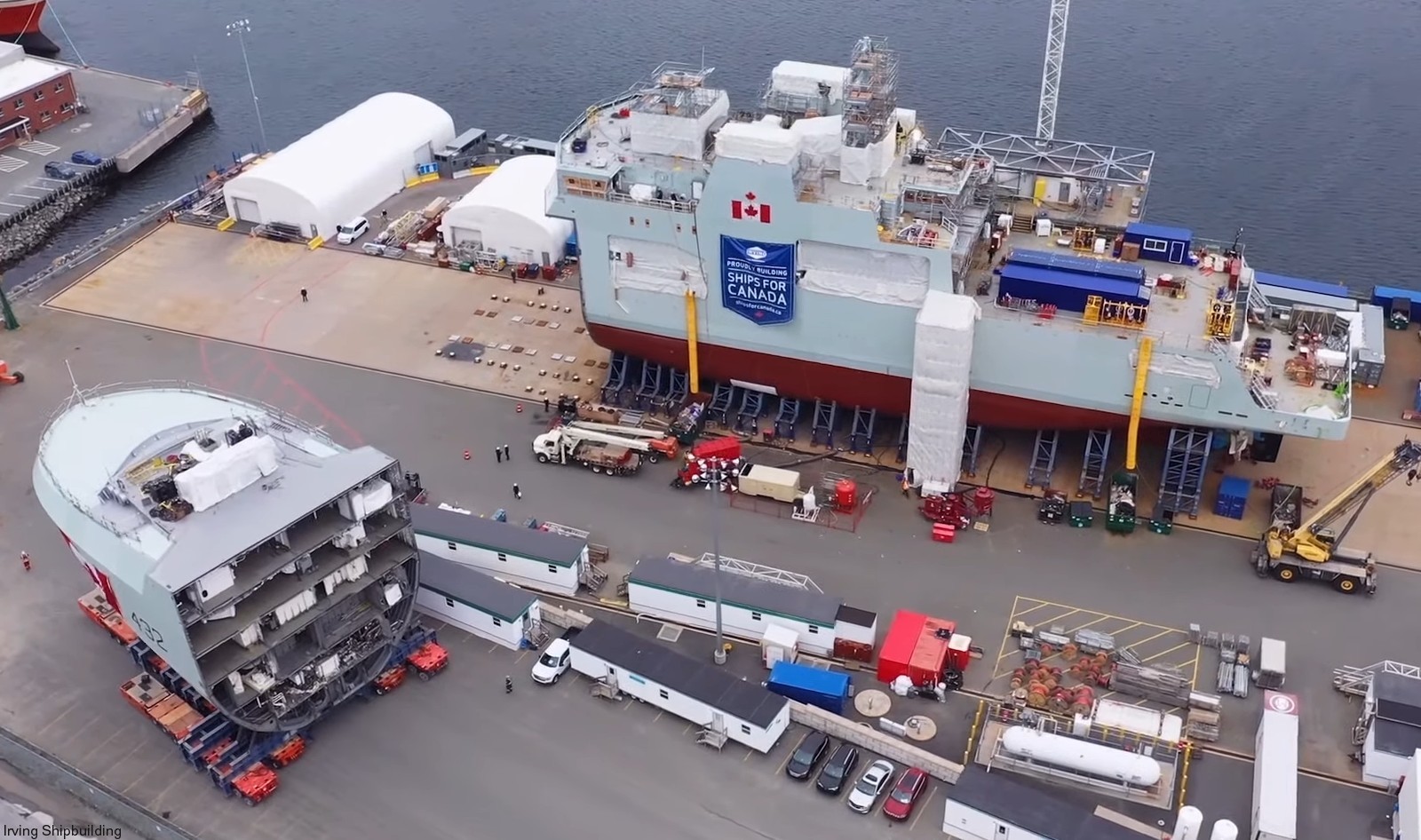 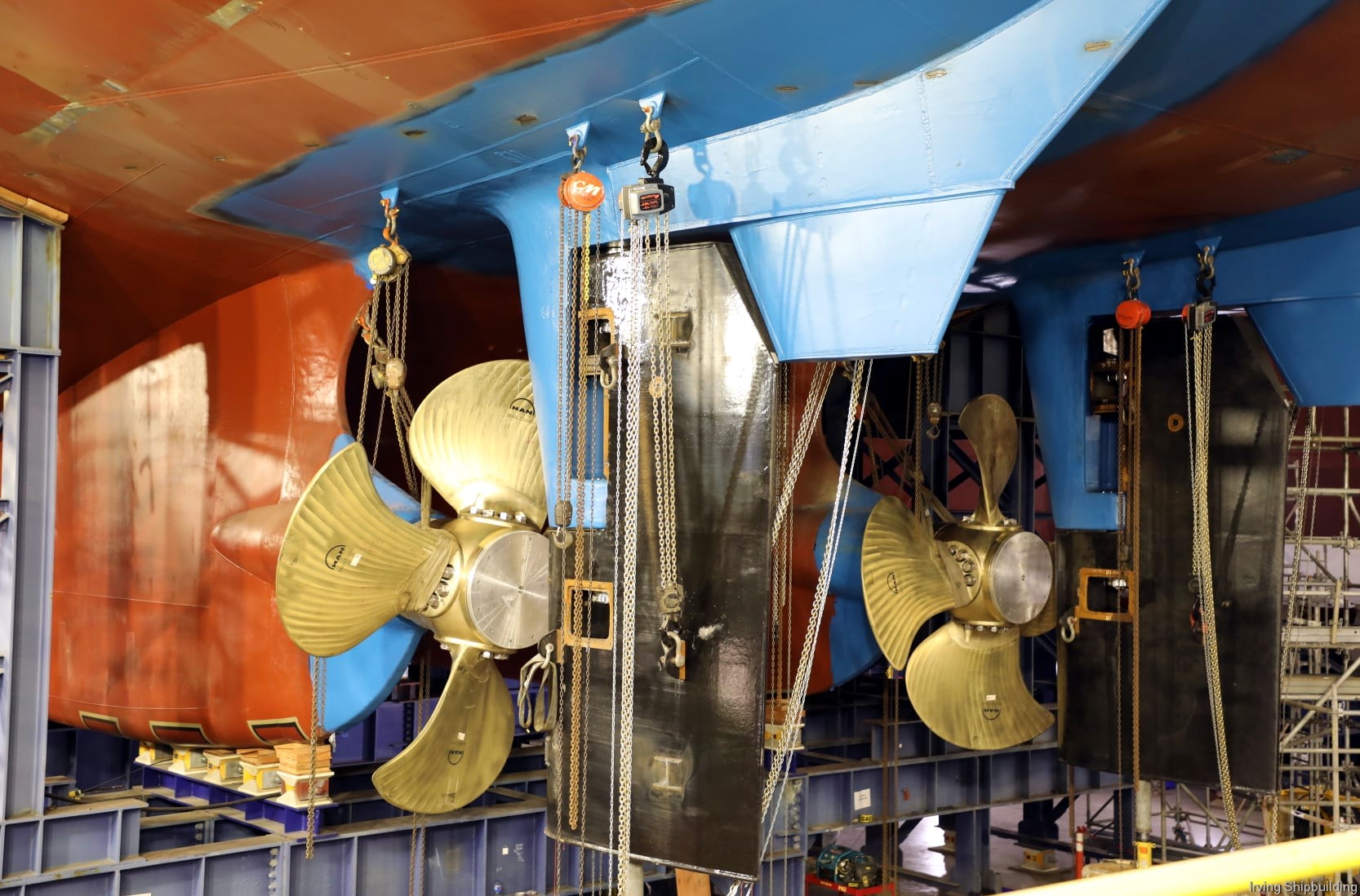 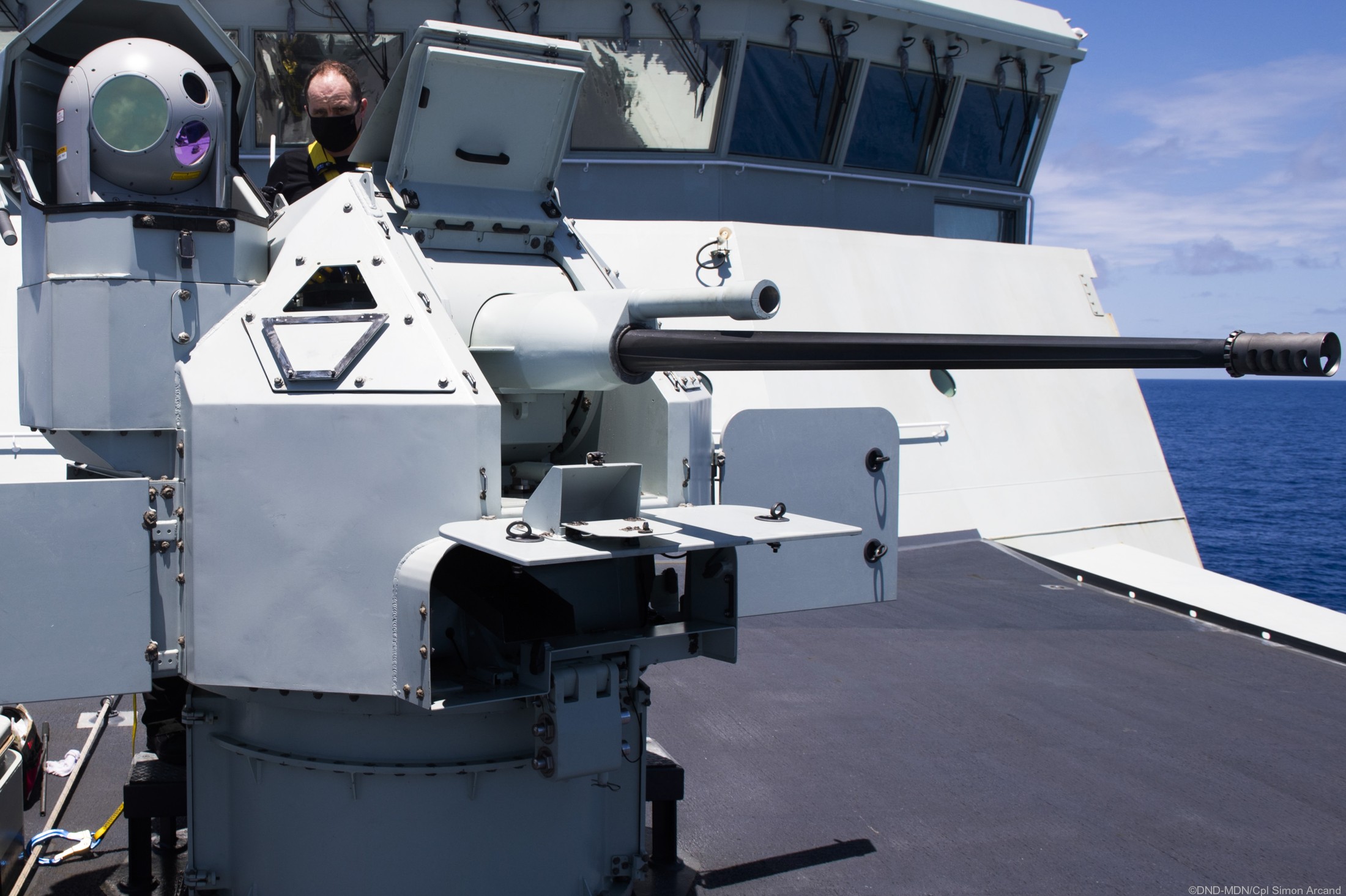 BAE Systems Mk.38 Mod.2 (modified) 25mm Machine Gun System (MGS) 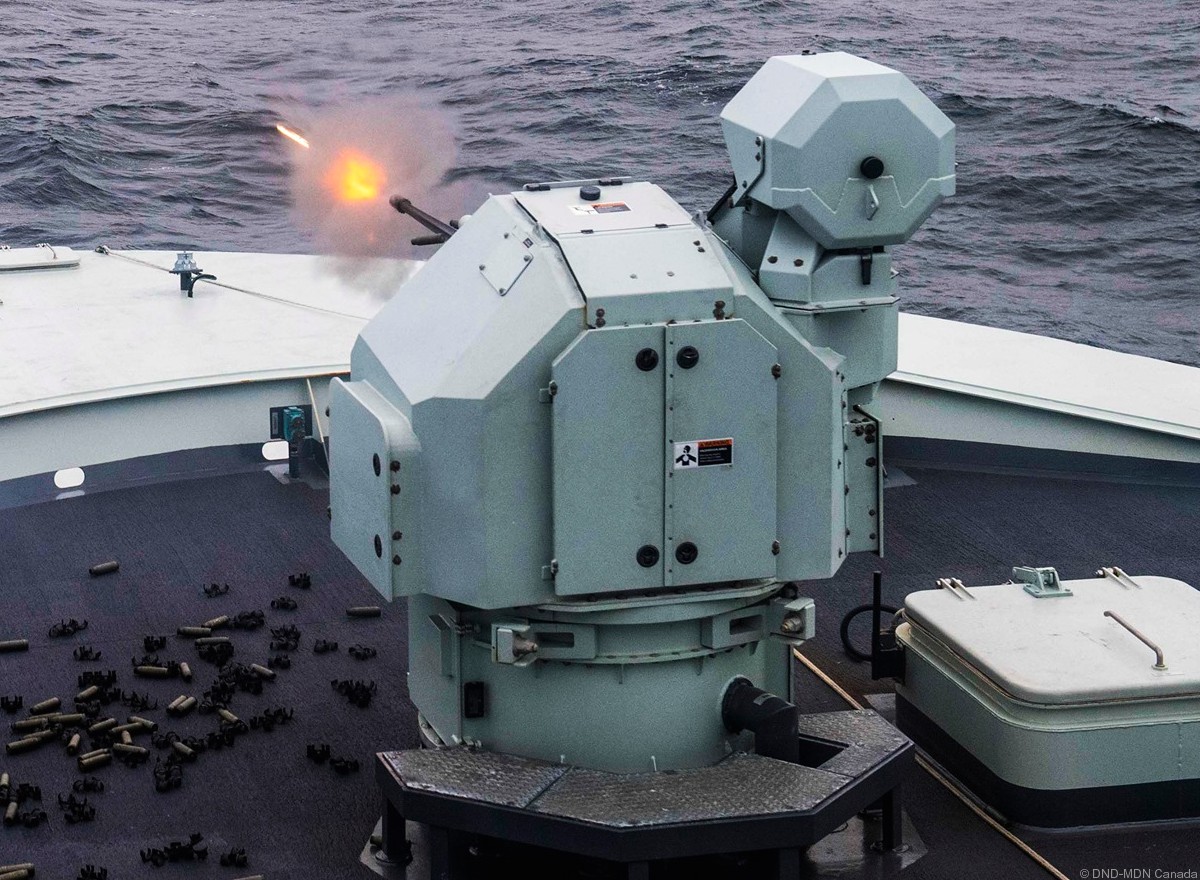 BAE Systems Mk.38 Mod.2 (modified) 25mm Machine Gun System (MGS) 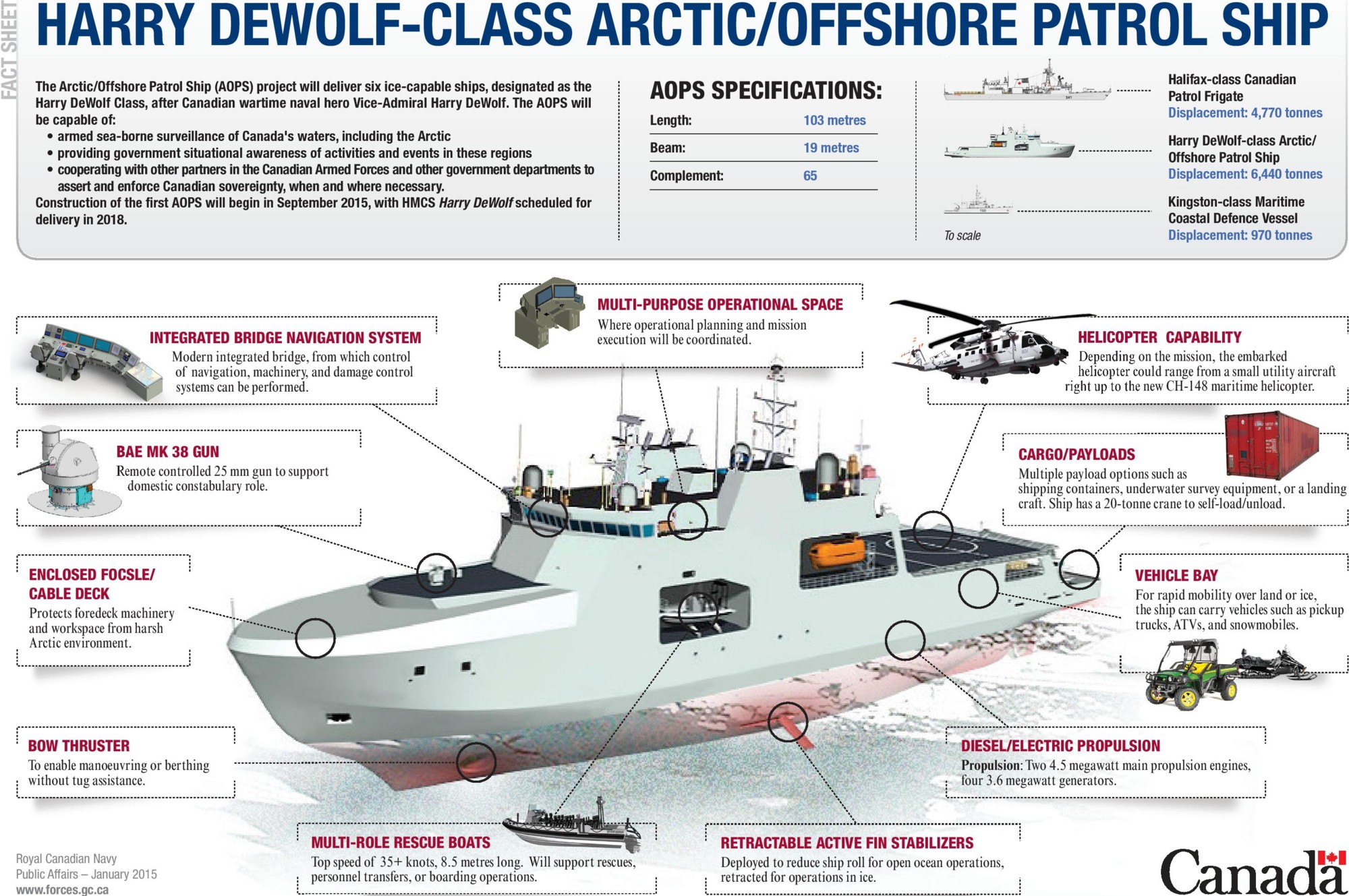 |
| | seaforces.org | Royal Canadian Navy start page | |